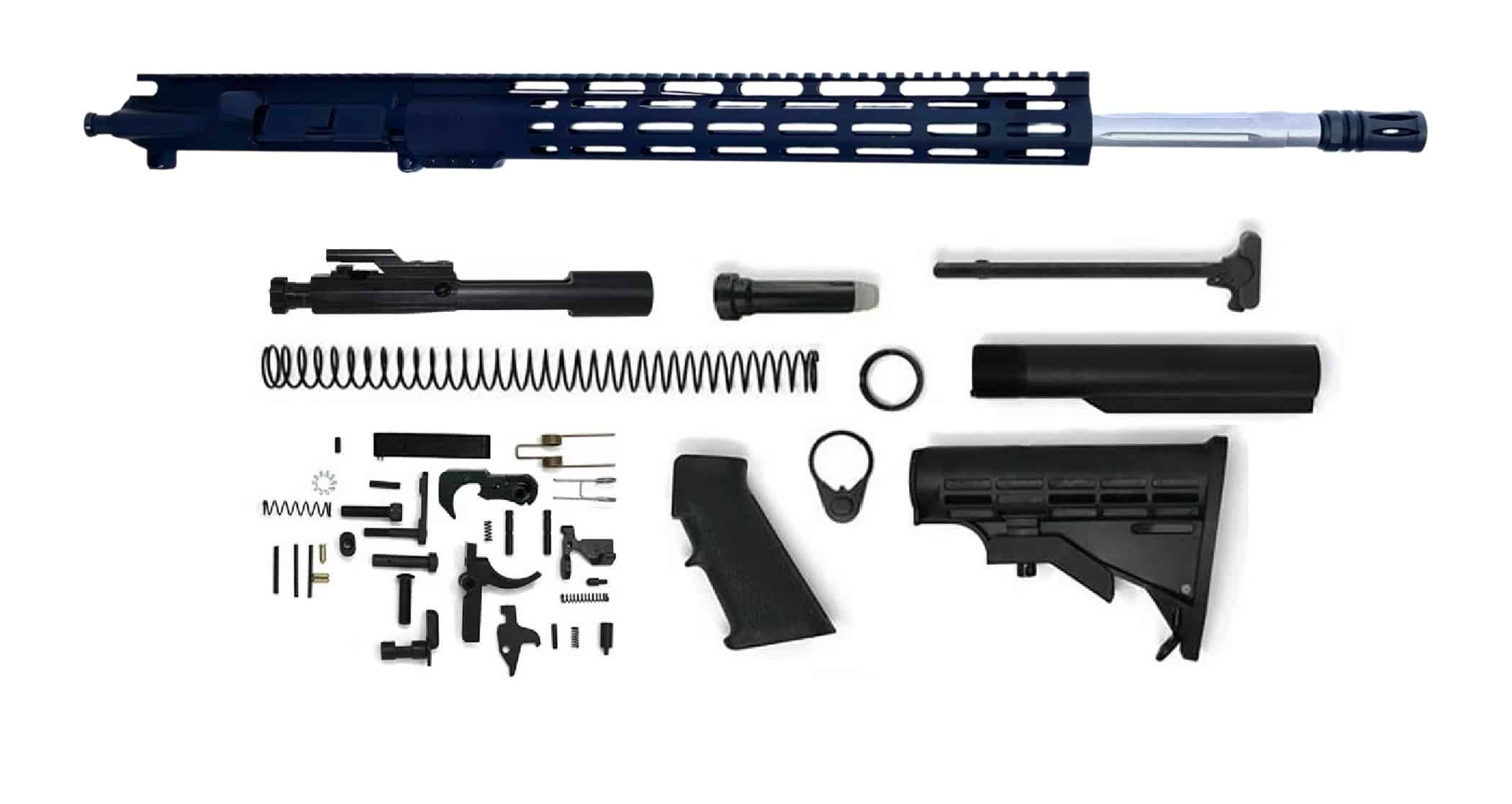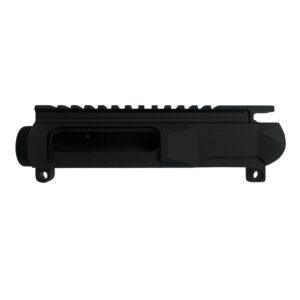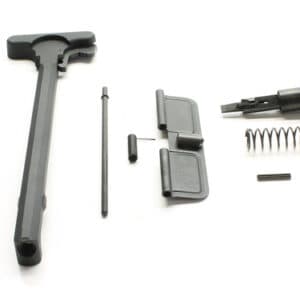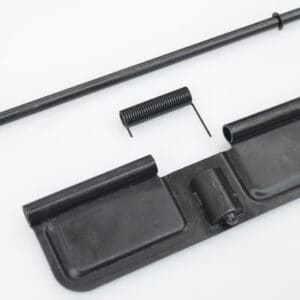The AR-15 rifle is one of the most popular firearms in the U.S., prized for its modular design, reliability, and versatility. Whether you are a first-time owner or an experienced shooter, knowing how to disassemble and maintain an AR-15 is essential for safe operation and long-term performance. Regular AR-15 maintenance, including field stripping, inspection, and lubrication, ensures your rifle stays reliable and extends its lifespan.
At Mid State Firearms, we offer a wide range of AR-15 components and parts to help you customize, upgrade, and repair your rifle.
Why Proper AR-15 Disassembly Matters
Learning to field strip your AR-15 is crucial for:
- Preventing malfunctions and ensuring reliability.
- Inspecting components for wear or damage.
- Applying lubrication to moving parts for smooth operation.
- Installing or upgrading parts like bolt carrier groups (BCGs), barrels, triggers, and buffer assemblies.
AR-15 Safety Precautions Before Disassembly
Safety is the top priority when working on your AR-15. Always:
- Unload the rifle – Remove the magazine and check the chamber to ensure it is empty.
- Engage the safety – Set the selector to “safe.”
- Prepare a clean workspace – Use a well-lit, distraction-free area with gloves and eye protection.
Tools and AR-15 Components You’ll Need
While most AR-15s can be field stripped without specialized tools, having these items makes the process smoother:
- Punch Set – Helps with pin removal.
- Small Hammer – Assists with disassembly.
- Soft Cloth or Mat – Protects your rifle’s finish.
- Lubricant and Solvent – Ensures smooth operation.
For replacement or upgraded parts like BCGs, barrels, triggers, and buffer assemblies, check out Mid State Firearms.
Step-by-Step AR-15 Disassembly & Field Strip
1. Separate Upper and Lower Receivers
- Push out the rear takedown pin above the pistol grip.
- Press the front pivot pin near the magazine well.
- Carefully separate the upper and lower receivers.
2. Remove the Bolt Carrier Group (BCG) and Charging Handle
- Pull back the charging handle to expose the BCG.
- Carefully lift the BCG out of the upper receiver.
- Remove the charging handle by sliding it rearward.
3. Disassemble the Bolt Carrier Group
- Remove the firing pin retaining pin.
- Extract the firing pin.
- Rotate the cam pin 90 degrees and remove it.
- Slide the bolt out of the carrier.

4. Remove the Buffer and Buffer Spring
- Press down the buffer retainer and remove the buffer and spring.
Inspect Your AR-15 Components
Disassembly allows you to inspect your rifle for wear or damage. Focus on:
- Bolt Carrier Group – Check the bolt, gas rings, and firing pin.
- Upper and Lower Receivers – Look for cracks or stress.
- Buffer Assembly – Inspect buffer, spring, and detent pins.
- Barrel and chamber – Look for fouling, pitting, or corrosion.
Replace or upgrade any worn parts with high-quality components from Mid State Firearms.
Reassembling Your AR-15
- Reinsert the buffer and spring into the buffer tube.
- Reassemble the BCG.
- Insert the charging handle and BCG into the upper receiver.
- Align the upper and lower receivers and push the pivot and takedown pins into place.
Function Check: Ensure Proper AR-15 Operation
- Set the safety selector to “safe.”
- Pull the charging handle to ensure smooth operation.
- Test the trigger with safety off and on.
- Confirm all components work correctly before live firing.
Tips for Regular AR-15 Maintenance and Upgrades
- Inspect and lubricate moving parts regularly.
- Replace worn components promptly.
- Upgrade parts like triggers, BCGs, or buffers for improved performance.
- Store your AR-15 in a cool, dry environment to prevent corrosion.
AR-15 Disassembly & Maintenance FAQ
1. How often should I disassemble my AR-15?
For optimal performance, it’s recommended to field strip and inspect your AR-15 after every few hundred rounds or at least once a month if you don’t shoot frequently. Regular inspection helps prevent malfunctions and ensures longevity.
2. Can I replace my AR-15 BCG myself?
Yes, replacing a BCG is straightforward if you know how to field strip your rifle. Always follow safety procedures, and inspect other components while the BCG is removed.
3. What parts should I inspect during AR-15 maintenance?
Key parts to check include:
- Bolt Carrier Group – bolts, gas rings, firing pin
- Barrel – chamber and bore for fouling or corrosion
- Buffer assembly – buffer, spring, and detent pins
- Upper and lower receivers for cracks or stress
4. How do I perform an AR-15 function check?
After reassembly, set the safety selector to “safe”, cycle the charging handle, and test the trigger with safety on and off. Ensure the rifle operates smoothly before firing.
5. Can I upgrade my AR-15 components during maintenance?
Absolutely! Field stripping your rifle is the perfect time to upgrade parts like triggers, BCGs, barrels, or buffer assemblies for improved performance and reliability.












